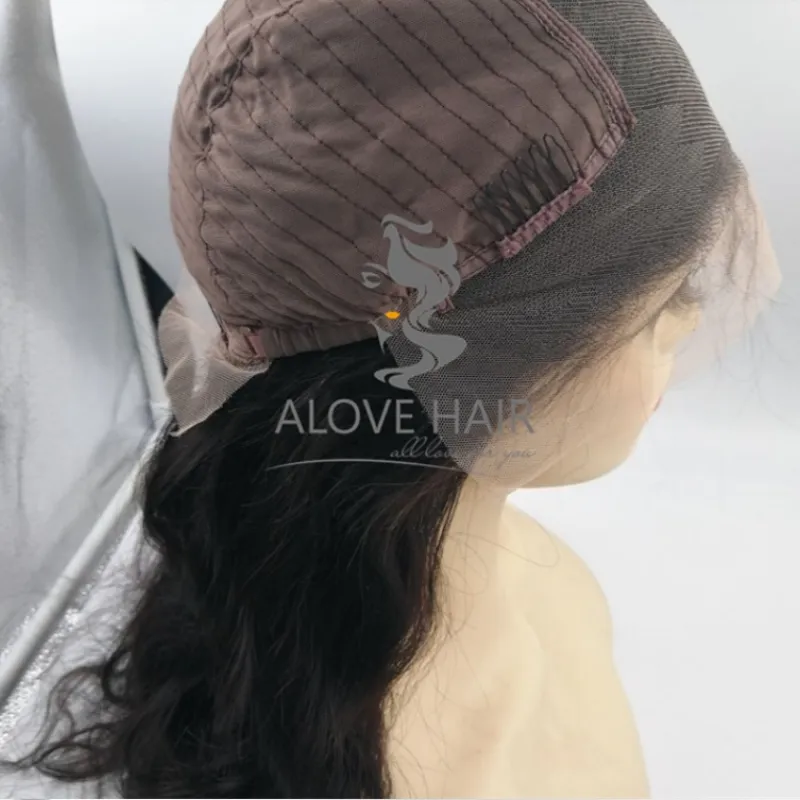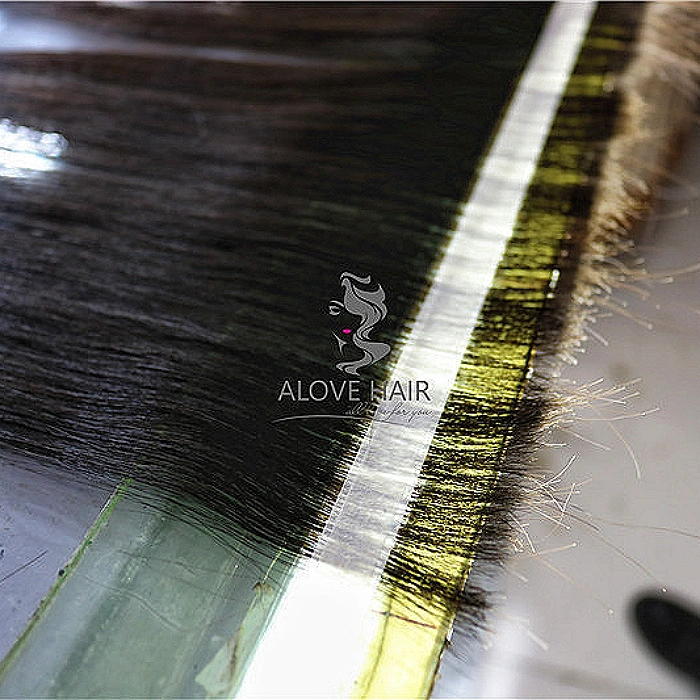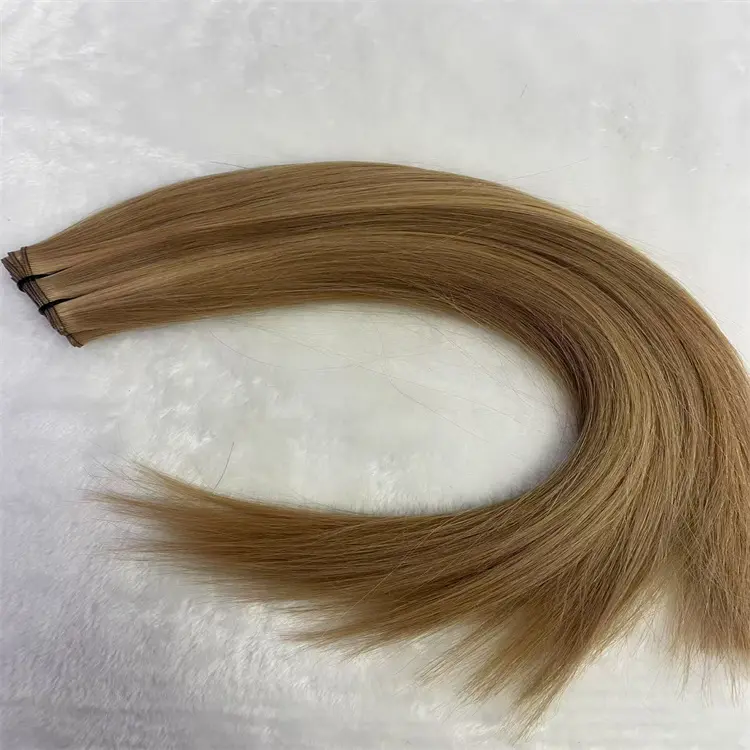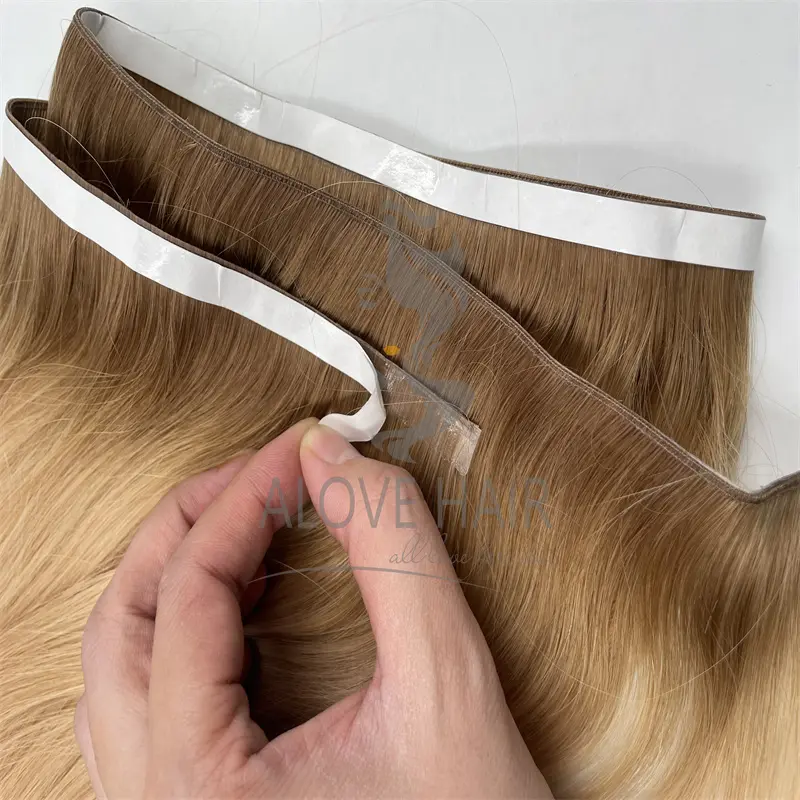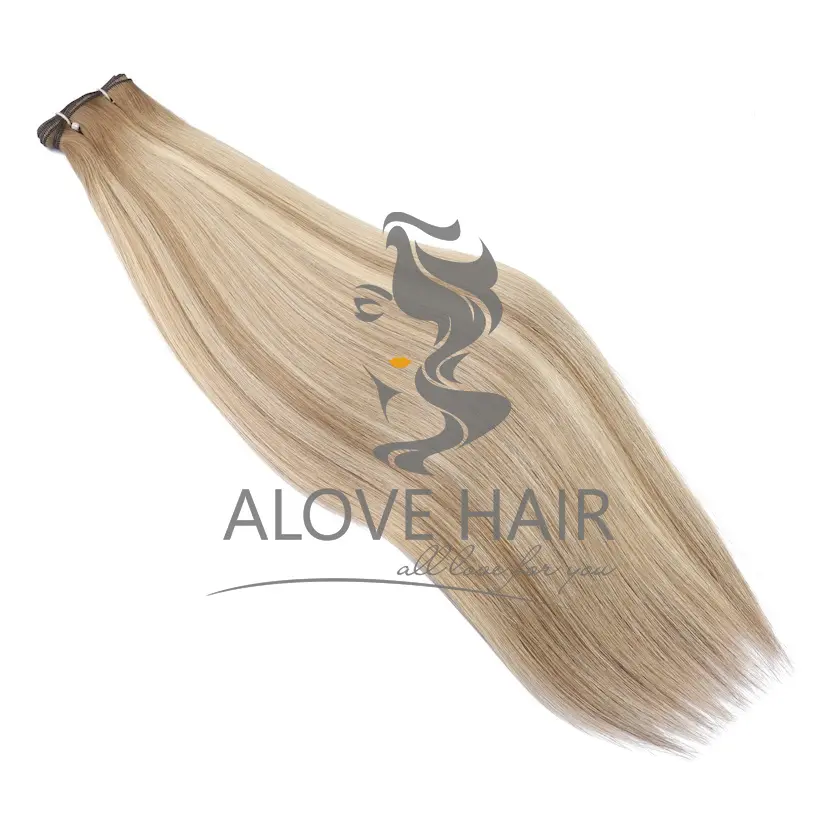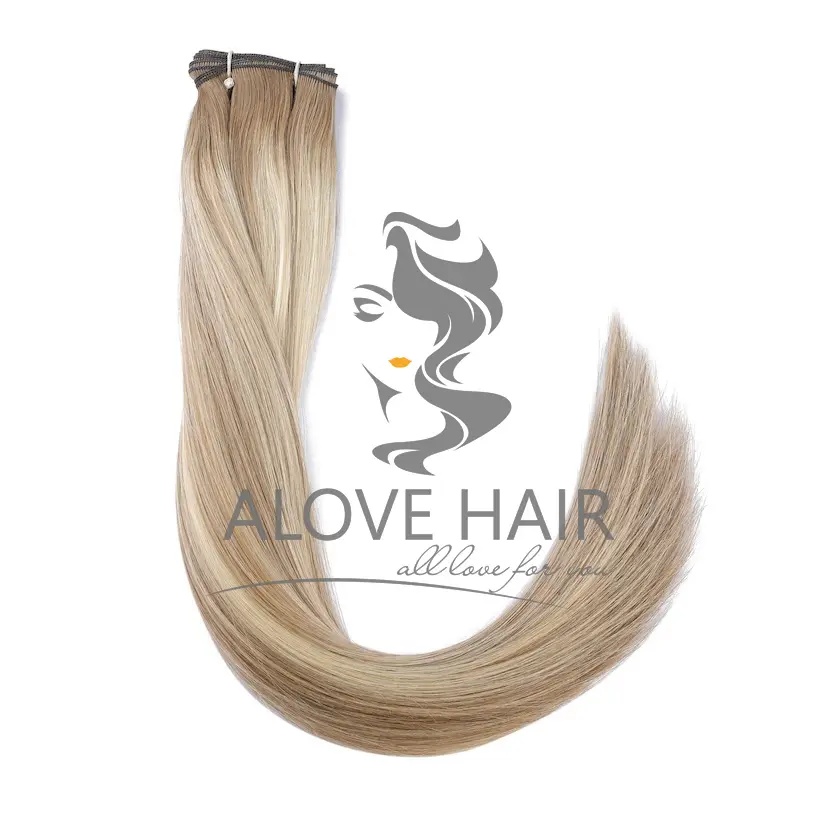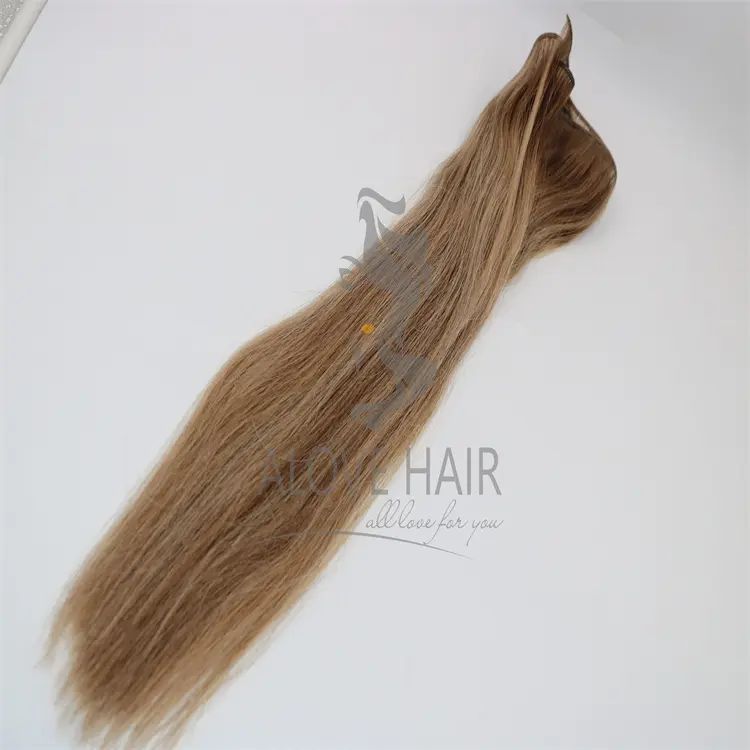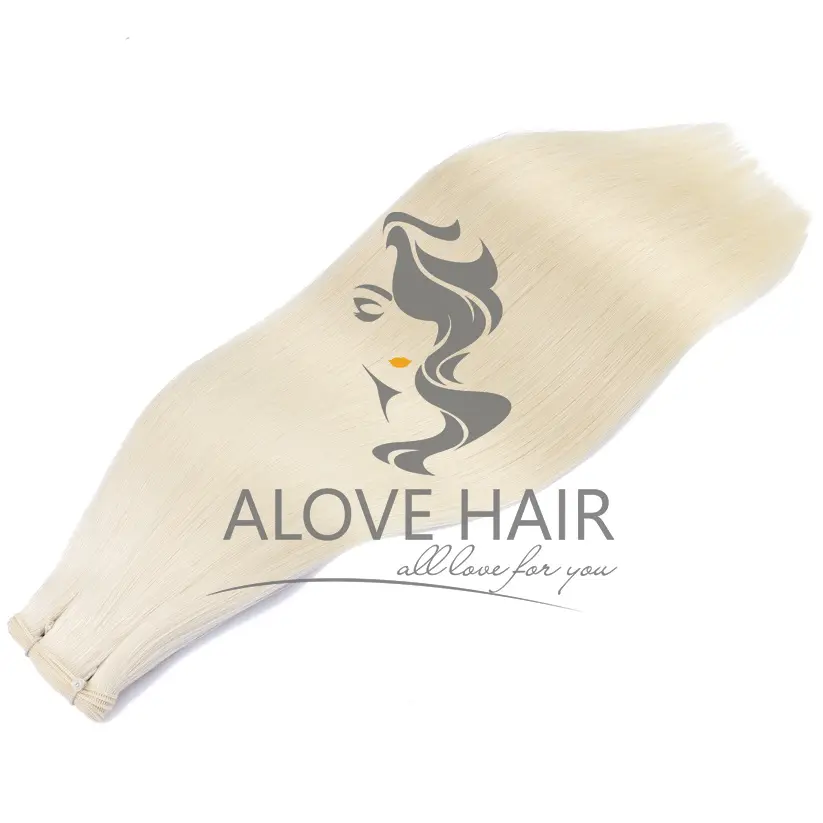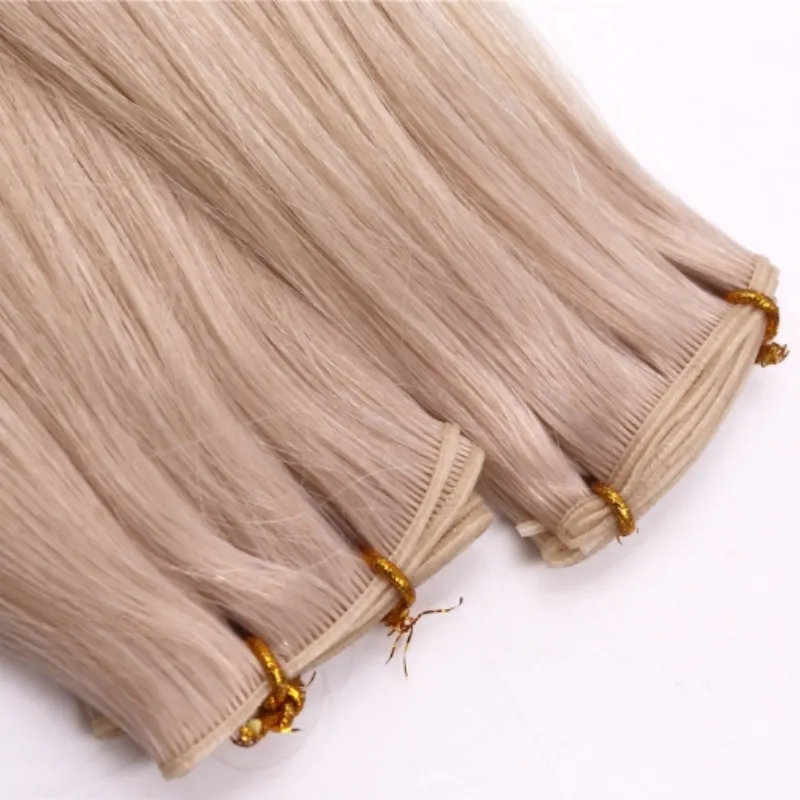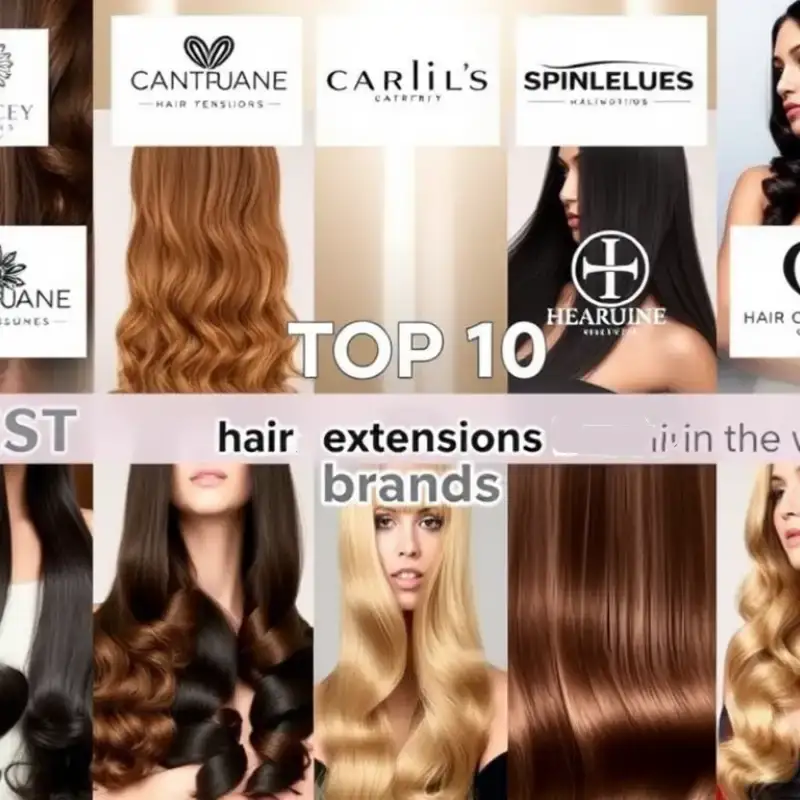Wigs have become a versatile and essential accessory for countless women worldwide. Whether for fashion, medical reasons like hair loss from alopecia or chemotherapy, or simply the convenience of switching up your look instantly, wigs offer endless possibilities. They allow you to experiment with different lengths, colors, and styles without committing to permanent changes, making them a favorite among beauty enthusiasts and those seeking practical solutions alike.
If you're buying a wig for the first time, it's normal to feel a little overwhelmed. With so many options—human hair vs. synthetic, lace front vs. basic cap, short vs. long—where do you even begin? You might worry about choosing the wrong style, struggling with fit, or making it look natural. But don't stress! This guide is designed to walk you through every step, from understanding wig types to measuring your head, styling tips, and avoiding common beginner mistakes.
By the end of this guide, you'll feel confident in selecting the perfect wig for your needs, budget, and lifestyle. Whether you're looking for a glamorous transformation, a medical hair solution, or just a fun change, we've got you covered. Let's dive in and find your ideal match!
Types of Wigs: Understanding Your Options
Choosing the right wig starts with understanding the different types available. Wigs vary in material, construction, and styling versatility, so selecting the best option depends on your budget, lifestyle, and desired look. Below, we break down the main categories: human hair wigs, synthetic wigs, heat-friendly synthetics, and different cap constructions (lace front, full lace, and basic cap).
1. Human Hair Wigs (Most Natural, Customizable, High Maintenance)
Why Choose Human Hair?
Human hair wigs are the gold standard for a natural appearance and styling flexibility. Made from 100% real hair, they mimic the look, movement, and texture of natural hair, making them nearly undetectable when properly worn.
Key Benefits:
✔ Most realistic – Blends seamlessly with your natural hairline.
✔ Fully customizable – Can be cut, colored, and heat-styled just like your own hair.
✔ Long-lasting – With proper care, they can last 1-3 years or more.
✔ Versatile styling – Works with curling irons, straighteners, and updos.
Drawbacks:
❌ Expensive – Typically range from 200to200to3,000+ depending on quality.
❌ High maintenance – Requires regular washing, conditioning, and styling.
❌ Fragile to heat/chemicals – Overprocessing can damage the hair.
Best For:
Those who want the most natural look.
People willing to invest in long-term wear.
Anyone who enjoys styling versatility.
2. Synthetic Wigs (Affordable, Pre-Styled, Less Natural Movement)
Why Choose Synthetic?
Synthetic wigs are budget-friendly, low-maintenance, and come pre-styled, making them ideal for beginners or those who want a hassle-free option.
Key Benefits:
✔ Affordable – Prices range from 30to30to150.
✔ Ready-to-wear – Holds its style without daily restyling.
✔ Low maintenance – Doesn’t require frequent washing.
✔ Great for occasional use – Perfect for costumes, travel, or temporary wear.
Drawbacks:
❌ Less natural movement – Can look shiny or stiff.
❌ Limited styling – Most can’t handle heat tools (unless labeled "heat-friendly").
❌ Shorter lifespan – Lasts 4-6 months with regular wear.
Best For:
First-time wig buyers.
Those on a budget.
People who prefer easy, no-fuss styling.
3. Heat-Friendly Synthetic Wigs (More Styling Flexibility)
Why Choose Heat-Friendly Synthetic?
These wigs offer a middle ground between standard synthetic and human hair—more affordable than human hair but with some styling freedom.
Key Benefits:
✔ Can be heat-styled (up to a certain temperature, usually 300-350°F).
✔ More natural movement than regular synthetic wigs.
✔ More affordable than human hair (typically 80−80−250).
Drawbacks:
❌ Still not as natural as human hair.
❌ Heat damage risk – Excessive styling can melt fibers.
❌ Lifespan shorter than human hair (around 6-12 months).
Best For:
Those who want some styling options without the high cost of human hair.
Wig wearers who like to switch up their look occasionally.
4. Wig Cap Constructions: Lace Front vs. Full Lace vs. Basic Cap
The wig cap determines comfort, breathability, and realism. Here’s a breakdown:
A. Lace Front Wigs
Features: A sheer lace panel at the front for a natural hairline; the rest is a wefted or machine-made cap.
Pros: More affordable than full lace, realistic at the front.
Cons: Less breathable at the back.
Best For: Everyday wear, those who want a natural hairline without the high cost of full lace.
B. Full Lace Wigs
Features: Entire cap is made of lace, allowing versatile parting & updos.
Pros: Most realistic, lightweight, breathable.
Cons: Expensive, delicate, requires adhesive for security.
Best For: Those who want maximum realism & styling freedom.
C. Basic Cap (Standard Wefted) Wigs
Features: Constructed with wefts sewn onto a cap; no lace.
Pros: Most affordable, durable.
Cons: Less natural hairline, can feel heavier.
Best For: Beginners, budget shoppers, or those who prioritize comfort over ultra-realism.
Which Wig Type is Right for You?
Want the most natural look? → Human hair + lace front/full lace.
Need budget-friendly & easy care? → Synthetic or heat-friendly synthetic.
Desire styling flexibility without high cost? → Heat-friendly synthetic + lace front.
Understanding these options will help you make an informed decision for your first wig purchase.
Choosing the Right Wig for Your Needs
Selecting the perfect wig depends on four key factors: purpose, budget, style, and color matching.
Purpose
Everyday wear? Opt for durable, breathable wigs like lace front human hair or heat-friendly synthetics.
Special occasions? Glamorous long, wavy, or curly styles add instant drama.
Medical hair loss? Prioritize soft, lightweight caps (monofilament or full lace) for comfort.
Budget
Synthetic wigs: 30–30–150 (great for beginners).
Human hair wigs: 200–200–3,000+ (long-term investment).
Style & Length
Short (pixie, bob): Low-maintenance, chic.
Medium/Long: Versatile for styling (straight, wavy, curly).
Color Matching
Cool skin tones? Ash blondes, cool browns.
Warm skin tones? Golden blondes, rich chocolates.
Undertone test: Check your veins (blue = cool, green = warm).
Pro Tip: Bring photos of your desired look when shopping!
How to Measure Your Head for a Perfect Wig Fit
A well-fitted wig stays secure and looks natural. Follow these steps:
Step-by-Step Measuring Guide
Circumference: Wrap a soft tape measure around your hairline (forehead → behind ears → nape).
Front to Nape: Measure from hairline center to the base of your skull.
Ear to Ear:
Across forehead: From ear top, over hairline.
Over crown: From ear, over head’s widest part.
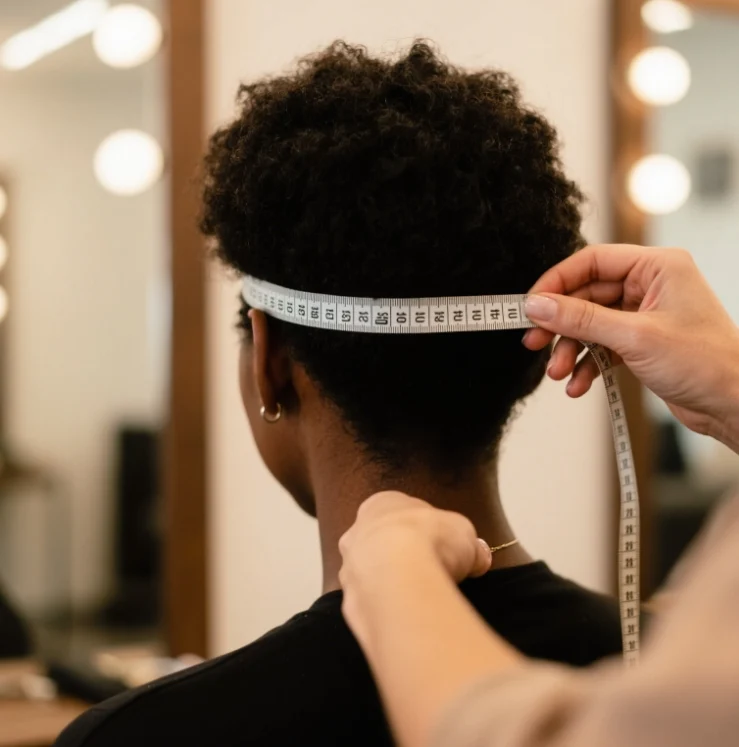
Wig Cap Sizes
Petite (21.5" circumference): Fits teens/small heads.
Average (22.5"): Most common; adjustable straps often accommodate 21.5–23.5".
Large (23.5"+) For fuller hair or larger heads.

Security Tips
Use adjustable straps inside the cap for a snug fit.
Wig grips/glue prevent slipping, especially for active wear.
Pro Tip: If between sizes, size up—you can always tighten straps!
5. Where to Buy a Wig: Online vs. In-Store Guide
Choosing where to buy your wig is just as important as selecting the right style. Here’s a breakdown of the best options, trusted sellers, and red flags to avoid.
Buying Online: Pros & Cons
Pros:
More options – Access to thousands of styles, colors, and cap constructions.
Competitive prices – Often cheaper than physical stores due to lower overhead costs.
Convenience – Shop from home, read reviews, and compare brands easily.
Recommended Online Retailer: Alove Hair – Known for high-quality human hair wigs, lace fronts, and great customer service.
Cons:
Can’t try before buying – Color/texture may differ from photos.
Shipping delays/returns – May take time to exchange if the fit isn’t right.
Best Places to Buy Wigs
Online:
Alove Hair (Premium human hair wigs)
Amazon (Budget-friendly synthetics, check seller ratings)
Wig-specific retailers (e.g., Elevate Styles, UNice, Mayvenn)
In-Store:
Beauty supply stores (e.g., Sally Beauty)
Specialty wig boutiques (Best for custom fittings)
Salons (Higher-end human hair wigs with professional help)
Red Flags to Avoid
Fake reviews – Check for repetitive phrasing or unverified purchases.
"Too good to be true" prices – Extremely cheap human hair wigs are often synthetic or low-quality.
No return policy – Reputable sellers offer at least a 7-30 day return window.
Stock images only – Legit sellers show real customer photos/videos.
Pro Tip: If buying online, order a color ring (sample swatch) first to check hair shades!
Trying On & Testing a Wig: How to Ensure the Perfect Fit
Buying a wig is an investment, so if you have the chance to try it on before purchasing—whether in-store or at home—here’s how to assess comfort, realism, and fit like a pro.
1. Checking for Comfort
A good wig should feel secure but not tight or itchy. Test for:
✔ Scalp Pressure – No excessive tension (headaches = too small).
✔ Breathability – Lace fronts/monofilament caps allow airflow.
✔ Ear Placement – Wig tabs shouldn’t fold or dig behind ears.
✔ Weight – Human hair wigs are heavier; synthetics feel lighter.
Fix It: If too tight, loosen adjustable straps or size up. For itchiness, wear a wig cap underneath.
2. Assessing Realism (Key for Undetectable Wear)
Hairline Test:
Lace Fronts: Hold the wig up to light—the lace should be nearly invisible with knots bleached (tiny dark dots = less realistic).
Baby Hairs: Slightly uneven, wispy strands at the forehead mimic natural growth.
Parting Space: For synthetic wigs, the part should not show obvious wefts or a "grid" pattern.
Movement Test:
Human Hair: Should flow/sway naturally when you shake your head.
Synthetic: Stiffer movement is normal, but shouldn’t look "plastic-y."
Pro Tip: Use concealer or powder on the lace to blend with your skin tone.
3. Adjusting for a Snug Fit
Even with correct measurements, minor tweaks ensure security:
Adjust Straps – Most wigs have 2-3 hooks at the nape. Tighten until snug (1 finger should fit between wig and scalp).
Wig Grips/Adhesives – For active wear, use:
Velvet wig bands (no glue, reusable).
Lace glue/tape (for lace fronts; lasts 1-2 weeks).
Customize the Cap – If gaps remain:
Sew in elastic bands at the temples.
Add silicone padding for extra grip.
Warning: Avoid over-tightening—this can cause traction alopecia!
Final Checks Before Buying
✅ Mirror Test: Walk under different lighting (natural, indoor).
✅ Movement Test: Tilt head forward/backward—wig shouldn’t shift.
✅ Style Test: Try a high ponytail (if applicable)—does the cap show?
Remember: If buying online, check return policies in case the wig doesn’t meet expectations.
Wig Care Basics for Beginners: Keep Your Wig Looking New
Proper care extends your wig’s lifespan and keeps it looking fresh. Here’s how to maintain synthetic and human hair wigs with easy, beginner-friendly steps.
1. Synthetic Wig Care (Low Heat, Special Shampoos)
✔ Washing:
Use cold water and synthetic wig shampoo (avoid regular shampoos—they damage fibers).
Soak for 5 mins, gently swirl, then rinse. Never rub or twist.
✔ Drying & Styling:
Air-dry on a wig stand (never blow-dry).
Use low-heat tools (only if labeled heat-friendly).
✔ Detangling:
Wide-tooth comb or fingers only—start from ends to roots.
Pro Tip: Spray synthetic wig conditioner to reduce frizz and static.
2. Human Hair Wig Care (Washing, Conditioning, Heat Protection)
✔ Washing:
Use sulfate-free shampoo & conditioner every 7-14 wears.
Soak in lukewarm water, gently cleanse scalp area, then rinse.
✔ Heat Styling:
Always apply heat protectant before using hot tools.
Keep flat irons/curling wands below 350°F to prevent damage.
✔ Deep Conditioning:
Use a hydrating hair mask monthly to prevent dryness.
Warning: Avoid sleeping or showering in your wig—it shortens its life!
3. Storage Tips for All Wigs
✔ Short-Term: Place on a wig stand to maintain shape.
✔ Long-Term: Store in a breathable hair net + satin bag (prevents dust/tangling).
✔ Traveling: Use a hard wig case to avoid crushing.
Never:
Hang wigs by the straps (stretches the cap).
Store near heat/humidity (causes frizz/mold).
Pro Tip: For curly wigs, use curl spray and finger-coil to refresh definition.
Common First-Time Wig Mistakes to Avoid
Buying your first wig is exciting, but beginners often make these key mistakes. Here’s how to avoid them for a flawless wig-wearing experience.
1. Buying the Wrong Cap Size
The Mistake:
Getting a wig that’s too tight (causes headaches) or too loose (slips constantly).
How to Avoid It:
✔ Measure your head correctly (circumference, front-to-nape, ear-to-ear).
✔ Check size charts—most brands list petite (21.5"), average (22.5"), or large (23.5+").
✔ If between sizes, size up—you can tighten straps.
Pro Tip: Look for wigs with adjustable straps & ear tabs for a customizable fit.
2. Choosing an Unnatural Color or Style
The Mistake:
Picking a wig color that clashes with your skin tone or a style that doesn’t suit your face shape.
How to Avoid It:
✔ Match your skin’s undertone:
Cool tones? Try ash blondes, cool browns.
Warm tones? Go for golden blondes, caramel highlights.
✔ Start with a natural-looking style (e.g., soft layers, side-swept bangs).
✔ If experimenting, order a color ring/swatch first.
Pro Tip: For a seamless blend, choose a lace front wig with baby hairs.
3. Improper Maintenance Leading to Damage
The Mistake:
Washing with harsh products, skipping heat protection, or storing incorrectly—leading to frizz, shedding, or a shortened lifespan.
How to Avoid It:
✔ For synthetic wigs:
Use synthetic-safe shampoo + air-dry only.
Never apply high heat (unless labeled heat-friendly).
✔ For human hair wigs:
Wash with sulfate-free shampoo + deep condition monthly.
Always use heat protectant before styling.
✔ Storage: Keep on a wig stand or in a satin bag—never crumpled in a drawer.
Pro Tip: Detangle gently with a wide-tooth comb, starting from the ends.
Bonus: Other Common Mistakes
Not securing properly: Use wig grips or adhesive if active.
Overwashing: Human hair wigs need washing every 7-14 wears (not daily!).
Ignoring the return policy: Always check in case the wig doesn’t work out.
By avoiding these pitfalls, your first wig will look natural, stay secure, and last longer!
Frequently Asked Questions (FAQ) About Wigs
Here are answers to the most common wig-related questions, whether you're a first-time buyer or a seasoned wearer.
1. How Do I Make My Wig Look Natural?
✔ Choose the right hairline: Lace front or full lace wigs with bleached knots mimic scalp realism.
✔ Customize the part: Use concealer or powder to blend the parting with your skin tone.
✔ Trim baby hairs: Slightly uneven, wispy edges create a natural hairline.
✔ Style appropriately: Avoid overly stiff or perfect styles—soft layers and slight frizz help.
Pro Tip: Pluck a few hairs from the parting for a more realistic density.
2. Can I Sleep or Shower in My Wig?
Not recommended!
Sleeping in a wig causes friction, leading to tangling, matting, or cap stretching.
Showering in a wig (especially human hair) weakens the fibers and loosens adhesives.
Exception: If necessary, wear a satin bonnet to protect the wig while sleeping.
3. How Often Should I Replace My Wig?
Synthetic wigs: 4–6 months with regular wear (fibers degrade faster).
Human hair wigs: 1–3 years if well-maintained (depends on washing frequency).
Signs you need a new wig:
Excessive shedding or bald spots.
Tangling that won’t smooth out.
Faded color or frizz beyond repair.
4. How Do I Keep My Wig from Slipping?
✔ Wig grips/bands: Velvet headbands provide friction.
✔ Adhesives: Lace glue or tape (for lace fronts).
✔ Adjust straps: Tighten hooks at the nape for a snug fit.
✔ Silicone-lined caps: Help grip natural hair underneath.
5. Can I Dye or Bleach My Wig?
Human hair wigs: Yes, but use gentle dye and avoid overprocessing.
Synthetic wigs: No—chemicals melt the fibers. Only heat-friendly synthetics can be temporarily tinted with fabric dye.
Warning: Always strand-test first!
6. How Often Should I Wash My Wig?
Synthetic: Every 10–15 wears (or when dull/dirty).
Human hair: Every 7–14 wears (or after heavy sweating/product buildup).
Overwashing strips moisture, leading to dryness!
7. Can I Work Out in My Wig?
✅ Yes, but take precautions:
Secure with a wig grip + headband.
Opt for lightweight, breathable caps (monofilament or lace front).
Wash sooner if sweating heavily to prevent odor/bacteria.
8. What’s the Best Wig for Hot Weather?
Lace front or full lace wigs (most breathable).
Short/medium styles (less heat trapped).
Human hair (sweat won’t damage it like synthetics).
Pro Tip: Spritz with cooling scalp spray to stay fresh.
9. How Do I Travel with My Wig?
✔ Use a hard wig case or satin travel bag.
✔ Pack on top of luggage (never crushed under items).
✔ Bring a portable wig stand to air it out at your destination.
10. Why Is My Wig Tangling So Much?
Synthetic wigs: Static or friction (use anti-static spray).
Human hair wigs: Lack of moisture (apply leave-in conditioner).
Solution: Detangle gently with fingers or a wide-tooth comb, starting from the ends.
Bonus Tip: Sleep on a satin pillowcase to reduce friction.
When in doubt, consult a wig specialist or stylist—especially for cuts or complex styling. With proper care, your wig can stay beautiful for its full lifespan!
Conclusion
Choosing your first wig doesn't have to be overwhelming. By following this guide—from measuring your head and selecting the right type to avoiding common mistakes—you're now equipped to make a confident choice. Remember: the best wig complements your lifestyle, budget, and personal style, whether you're seeking glamorous lengths, medical hair solutions, or a fun temporary change.
Don't be afraid to experiment! Try different colors, textures, and cap constructions until you find your ideal match. Ready to start shopping? Explore trusted retailers like Alove Hair for premium human hair wigs or local salons for personalized fittings. Your journey to flawless, natural-looking hair begins now—rock your wig with confidence!
